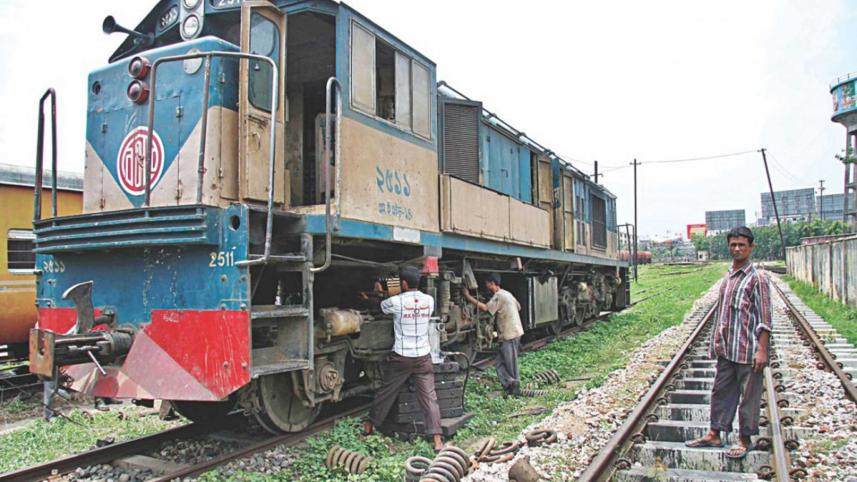Railway in poor shape

A transport service that depends on decrepit and outdated machines in need of frequent repairs is anything but up to scratch. Just to put it into perspective, 67 percent of the 263 locomotives that are in the inventory of Bangladesh Railway are obsolescent, and as many as 78 of them are more than half a century old. Those should be in the museum rather than being used for pulling railway bogies. This state of affairs is disconcerting, to say the least.
It's important to note that the railway happened to be the most preferred mode of public transport until recently, it being relatively safer and cheaper than other modes, and it may be hard to believe but once the railway service was known for its punctuality. But these facts may sound like fables now. It is no wonder that with the rundown locomotives, the service would face more frequent disruptions due to breakdowns and accidents. Regrettably, for quite some time, the sector has also been running up losses incrementally every year. The losses doubled between the two datum years. And old engines are like white elephants. The repair and maintenance cost makes the whole business uneconomical, naturally.
There must be something seriously wrong with the running of the railways. One would have thought that after the creation of a new, separate ministry for railways nearly 10 years ago, people would enjoy better services. But how does one explain the fact that the quality of service has been inversely proportional to the investment? Admittedly, considerable infrastructural developments have been made in this sector in the last several years. New tracks have been laid. New train services have been added to the schedule. But what has not improved is the quality of passenger service and punctuality.
This being the case, we believe a long-term overhaul plan for the railways is in order. The authorities ought to keep in mind that the railway forms an integral part of not only communications within the country, but it is an important cog in the integrated regional communications network. We understand that the government is planning to upgrade the important railway lines with a view to increasing connectivity and trade with other countries in the region, including Myanmar, India, China, Thailand, Malaysia and Singapore, through Ghumdhum via Ramu. Previous upgradation works were also restricted to development of railway infrastructure. However, we believe that the ministry should concurrently and proportionately invest in improving travel facilities by inducting better passenger wagons and locomotives. Only when people find it worth their money and time to travel by train would more people prefer the train. And only then can the railway be expected to make profits.



 For all latest news, follow The Daily Star's Google News channel.
For all latest news, follow The Daily Star's Google News channel.
Comments